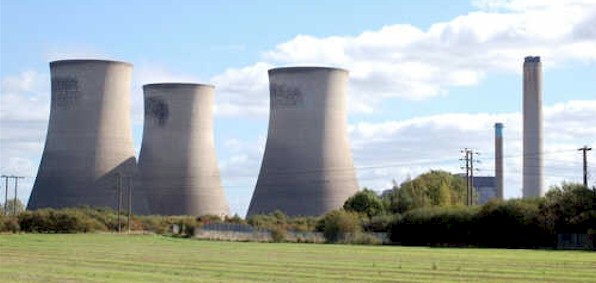
So far, the Biden administration has taken the focus of Joe Biden the candidate on climate issues seriously, especially the campaign commitment he made to the realization of a net-zero power grid by 2035. This commitment, reiterated at the Climate Leaders’ Summit in April, is particularly ambitious.
Even if wind and solar power have been contributing to the last decade’s drop, deep decarbonization of power generation by 2035 will be extremely challenging, if not impossible. Renewable-energy sources face physical limitations, carbon capture and storage (CCS) for power plants is far from mature, and the grid itself is not ready – it will need massive investments, a challenge intensified by the political push in states like New York and California for closures of nuclear plants.
Even assuming flat electricity demand, the task would be difficult. Yet the rush to a net-zero economy by 2050 will push up electricity demand, as electrification is almost the only tool to reduce directly or indirectly emissions in most sectors like transportation, industry, or heating, no matter the gains in energy efficiency. The spread of digital technologies could also push up demand further. The Department of Energy’s National Renewable Energy Laboratory (NREL) expects power demand in a net-zero economy to be two to four times its current level. There can be little doubt that decarbonizing the grid will be a Herculean task.
The Biden administration is rightly looking first at low-hanging fruit: Zero Emission Credits (ZEC) to keep the current nuclear fleet running, investment in shovel-ready grid transmission projects, and extending subsidies for solar and wind.
Yet, even heavy investment in available low-carbon technologies such as onshore wind turbines and solar photovoltaics will be far from enough. A strategy based only on renewables will hit a wall as intermittency, land and material requirements, and even public acceptance will probably not allow wind and solar power to satisfy more than 50% of electricity demand. This limit has already been confirmed by the Department of Energy.
Moreover, experts and most stakeholders already know that storage can only marginally solve these problems. Indeed, pumped hydropower and its huge direct environmental impact face low public acceptance, while batteries and hydrogen are expected to be suitable only as “ultra-peakers,” competing with the oldest gas peaker plants.
The rush to offshore wind will have only a marginal effect, too, as it will be especially expensive and will profit only well-off coastal communities, without solving the intermittency problem.
At the same time, natural gas is increasingly seen as a bridge for the energy transition – though it’s a treacherous one.
Indeed, any new gas plants will have a lifetime expectancy of 25 to 30 years. As such, any installation built between 2020 and 2030 leads to an expected closure date between 2045 and 2060. If the goal is to decarbonize the grid in 2045 (the unrealistic target of 2035 would be even worse), then virtually every new gas plant built from now on, which cannot be coupled with carbon capture and storage (CCS) or burning biomethane, must become at some point a costly, stranded asset. This creates a paradox: if utilities are to take seriously any ambitious decarbonization target, then they should not replace any coal plant by gas generation.
The administration knows that heavy public support will be needed to trigger investments in new power generation and plans to extend tax deductions for renewable-energy sources. Yet it also knows that wind and solar will not be enough, and that it could face strong bipartisan opposition from the many states which would not profit from these energy sources, or which would suffer from the phase-out of fossil fuels.
This is why Biden and Energy Secretary Jennifer Granholm want to expand private-public partnerships to demonstrate new technologies, especially CCS and advanced nuclear.
As every CCS power plant on the continent has been an utter failure so far – consider Boundary Dam and Petra Nova – nuclear is becoming attractive as the only firm, dispatchable, and clean power source that is also available and reliable.
Many major utilities, like TVA or Dominion, already include advanced nuclear in the form of SMR in their resource planning. They know that new nuclear will be needed to replace unabated gas-power generation in the decades ahead. And nuclear will probably be needed to help phase out coal nationally around 2035; stakeholders are looking for solutions to avoid building new gas power plants, which could quickly become stranded assets in a net-zero rush.
Even if most of the resurgent American nuclear industry’s potential won’t be available before 2030, it seems clear that the federal and local governments want to accelerate the deployment of new reactors. Nuclear will likely become a strategic cornerstone for emissions reduction.
The decision to build the first Natrium reactor with federal support on a decommissioned coal plant in Wyoming, in the heart of the windiest area in the U.S., shows that both the administration and the utilities understand that nuclear will be needed in every part of the country to hit the net-zero goal.
From a strategic standpoint, bipartisan support exists for U.S. nuclear technology exports, mainly in Central and Eastern Europe, to counteract Russian and even Chinese influences. Even so, these initiatives will not be enough to decarbonize the electricity system by 2035, which looks impossible to achieve within 14 years. They will, however, drive American technological leadership on clean energy, which could lead the U.S. not only to net-zero power production in the longer term but also to a net-zero economy by 2050, with an important export potential.


